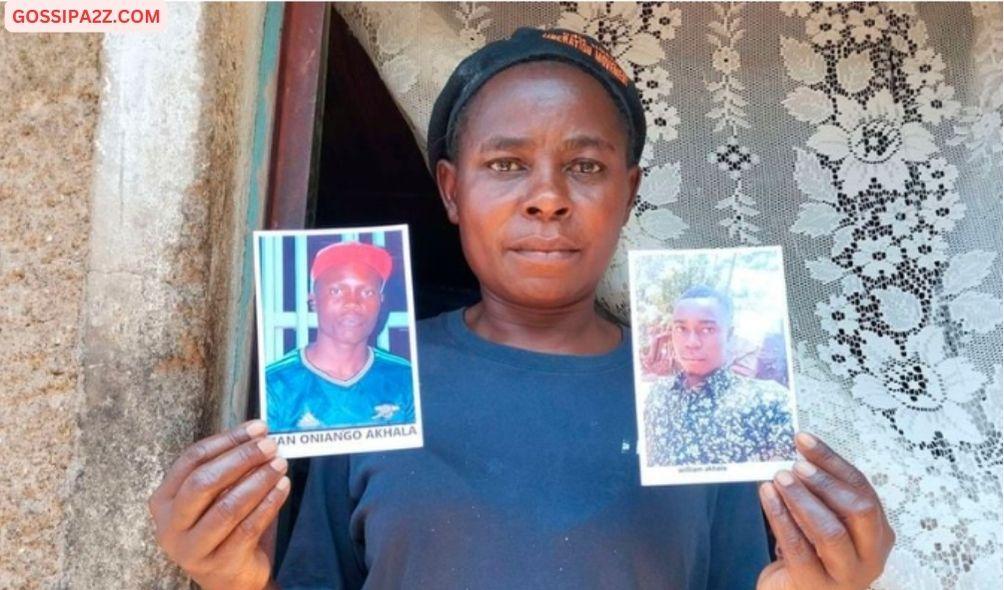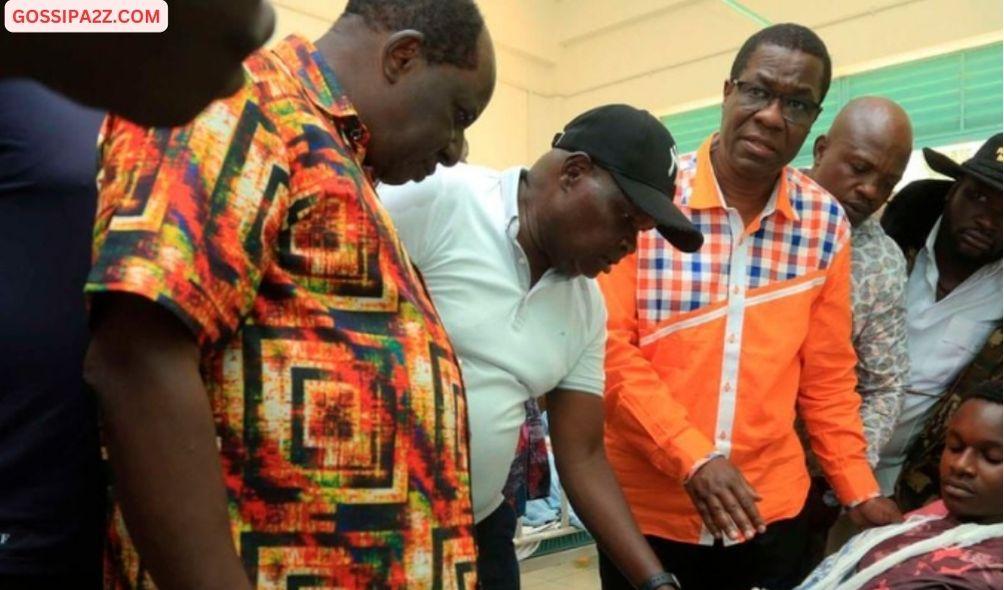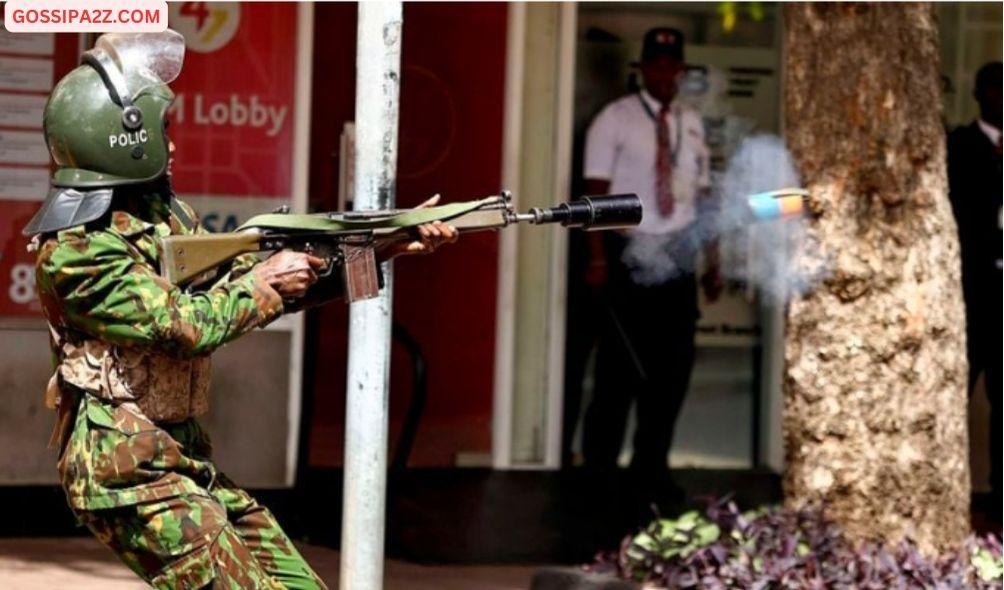Lost Voices: The Overlooked Victims of ‘Maandamano’
Memories of the brutal death of her son and her nephew at the hands of the police are still painful for 40-year-old Everlyne Achungo.
The scene was like a horror movie playing right in front of her eyes, recalled the distraught mother of two as we settled down for an interview at her house in the sprawling slums of Nyalenda in Kisumu County.
On that fateful day, she was startled by wailing and commotion right outside her house, which is situated by the roadside.
Happening at the height of anti-government demonstrations called by opposition outfit Azimio la Umoja One Kenya Coalition Party to protest against the high cost of living and the passing in Parliament of the controversial Finance Act, 2013, Ms Achungo quickly dashed out of her two-roomed house to check on her eldest son and a nephew who were outside.

“I found police officers indiscriminately kicking and punching young boys while others mercilessly used their batons to beat unarmed and defenseless youths who were pulled from their houses,” she narrated tearfully.
With the little energy that was left inside them, the boys pulled themselves to their one-roomed rental house adjacent to their parents’ house.
ALSO READ:
- Under and Over 7 — when the rules are simple, but the emotions are intense
- CAF Trophy Hunt: Win iPhone, MacBook, PlayStation, and other prizes in 1xBet promo!
- Rigathi Gachagua Responds to Raila Odinga’s Claim That He Can’t Fix Kenya’s Problems
- Miguna Miguna Criticizes New IEBC Chair Erastus Ethekon, Calls Him a Ruto Ally- ‘Not Independent’
- Matiang’i: No Scores to Settle, I Just Want to Fix My Country
By the time Ms. Achungo received information about the incident some 30 minutes later, her 24-year-old son, William Amulele, and 22-year-old nephew Brian Oniang’o were lying unconscious in their house.
“I rushed to their house and found my son lying on the floor while my nephew was on the bed,” she said.
Since all major roads were still blocked by protesters across the lakeside city, Ms. Achungo together with neighbors rushed the two men to a nearby medical facility, where they only managed to be given painkillers before they were referred to the Jaramogi Oginga Odinga Teaching and Referral Hospital.
By the time they got to the referral facility over three hours later, the condition of the two injured men got worse and they were immediately admitted to the Intensive Care Unit.
Brian died after five days while William succumbed a day later. An autopsy revealed that Brian succumbed to a cracked skull while William suffered a broken neck and cracked skull.
For Ms Achungo, who survives on selling chapatis in a makeshift eatery in Nyalenda, the death of her son, who was working as a waiter in one of the local eateries was a big setback that she is yet to overcome.
“He supplemented our income and helped us meet other basic needs as my husband relies on temporary jobs as a welder in the Jua Kali area,” she said.
Brian, who had completed his Kenya Certificate of Secondary Education exams, was waiting to join the Kisumu National Polytechnic in September last year.
The two deaths are just the tip of the iceberg in the aftermath of anti-government protests that began on March 20, 2023, across the country, leaving behind a trail of deaths.
ALSO READ: Raila Gifts Ruto D- in First Year Scorecard And Gives Way Foward On Maandamano
Considered an opposition backyard, Kisumu-based human rights activist Boniface Akatch said the lakeside city recorded over 10 deaths.
He also pointed out that more than 78 people got injured, 41 of them had gunshot wounds. Others were attacked by criminals who took advantage of the lawlessness to cause chaos.
“It is unfortunate that the police were not using rubber bullets as expected but instead used live bullets on peaceful protesters,” Mr Akatch said.
Some of those killed across the country include 13-year-old Jeremiah Mwengi, who was shot in the back of the head and died while being taken to the Kenyatta National Hospital (KNH).
In Mlolongo, four people died during the protests with two deaths being recorded in Kitengela after protesters attacked the divisional headquarters, destroying the national flag and torching the Assistant County Commissioner’s office.
Others killed included Cornel Fuka, Paul Mathius, Sarah Fridah, and Fabrigas Zami, who died after a tear gas canister was thrown inside the house where they lived with their parents.
The parents had hidden the children for safety when the tear gas choked and burned them.
Victor Juma was arrested while confronting the police who had thrown tear gas canisters inside his house, which led to his two-year-old daughter fainting.
Godwin Omondi Omwandi was shot in the leg, Kevin Omondi was shot in the private parts and Nijer Oduor had his fingers chopped off by an unknown object that was thrown by the police.
Caleb Noah was shot in the leg while he was walking to pick up his son from school and Ms Loise Akinyi, 45, had her left arm grazed by a bullet.
ALSO READ: DCI apologizes for using the wrong photos during the Maandamano rally
Isaac Odhiambo, 19, was hit and wounded on the head by a tear gas canister while Francis Oponde was injured on both legs by a tear gas canister.
Annette Achewa, 14, was shot in the back on her shoulder while Isaac Adhiambo was injured in the head by a tear gas canister.
Two-month-old baby Valentine Wairimu was choked by tear gas after a canister was thrown on the roof of her parents’ house. She fell unconscious and died in hospital while receiving treatment.

Alfred Odongo Obura was arrested after being accused of stealing a gas cylinder from Shell Petrol Station on Juja Road in Nairobi.
For Stephen Msechu, who operated an eatery in the busy Gikomba open-air market in Nairobi, the opposition-led protests put him through one of the most agonizing times of his life.
His business was looted just a month after he had established it by criminals who took advantage of the disorder to cart away equipment worth over Sh70,000.
ALSO READ: Ruto’s Lawyer Accuses Raila Before ICC
“I was forced to move back to Mombasa after failing to secure capital or employment to keep my family going,” he said.
Msechu, who has since relocated to his home county, is currently supplying fresh juice in Tudor, Mombasa.
He says his life has never been the same again.
“For over seven months after the destruction of my entire business, I found life in Nairobi unbearable and was forced to go back to Mombasa to start afresh,” said Msechu.
His efforts to get support from friends, well-wishers, and local leaders failed to bear fruit.
The deaths led to a demand by Azimio for compensation for over 75 people killed during the demonstrations.
ALSO READ: I won’t allow Raila to lead street protests again – Kalonzo
The opposition coalition, through lawyer Paul Mwangi, filed a petition in court, saying that police bosses should be held responsible for the deaths of the 75 people.
While the Azimio leaders helped families whose relatives died in the aftermath of the protests to defray funeral costs, Msechu, a father of three, says the people who were brutalized or suffered losses were neglected.
Unlike in the past when Orange Democratic Movement (ODM) party leader Raila Odinga, who is also the Azimio boss, remained steadfast in championing the rights of victims of police brutality, the victims have been left on their own.
Mr. Msechu said the new-found dalliance between President William Ruto and Mr. Odinga could jeopardize the victims’s quest for justice.
Once bitter political enemies, leaders from both the Azimio coalition and the ruling Kenya Kwanza Alliance seem to have reconciled their differences.
Survivors of police brutality and criminal gangs who attacked innocent Kenyans are hoping that both the opposition and the government will unite to ensure that justice is served and that the victims get the necessary support.
Charity Akinyi, whose husband was caught up in the crossfire as police sought to break up protesters who had barricaded sections of the road at the chaotic Kondele roundabout in Kisumu City, says she has been left to fend for herself and her only child after the loss of the family’s breadwinner.
The situation is, however, worse for women and girls who suffered gender-based violence, said Utu Wetu Trust Executive Director Ms Yvone Oyieke.
She pointed out that several survivors and their children still face stigma.
“Several women and children continue to live with the impact of violence, which took a gender turn and there has not been much accountability,” Ms Oyieke said.
ALSO READ: “Keep Your Mouth Shut!” Raila Warns US Ambassador
National Assembly Minority Leader Opiyo Wandayi, while cautioning against personalization of the matter, said the plight of the victims of the anti-government protests is captured in the National Dialogue Committee (Nadco) report.
Mr Wandayi pointed out that the opposition has been outspoken on key issues facing Kenyans and will not accept to be silenced by the government as a condition to support Mr Odinga’s bid to chair the African Union Commission (AUC).
“This is not about Mr Odinga but about a movement of the opposition, which is committed to keep the Kenya Kwanza in check,” he told Nation.
For his part, ODM Secretary-General Edwin Sifuna said the blame should be directed at the government rather than the opposition.
He said the individuals who came out to support the anti-government protests were not just ODM supporters but Kenyans in general, who were protesting against the high cost of living among other grievances.
The people who killed them, the legislator said, were acting at the behest of the government.
“So the people to be asked if the victims will get justice are in the government and not ODM. The brutality and killings were done by police officers and so the people to be asked are the government officials and not us,” said the Nairobi senator.
Lost Voices: The Overlooked Victims of ‘Maandamano’
